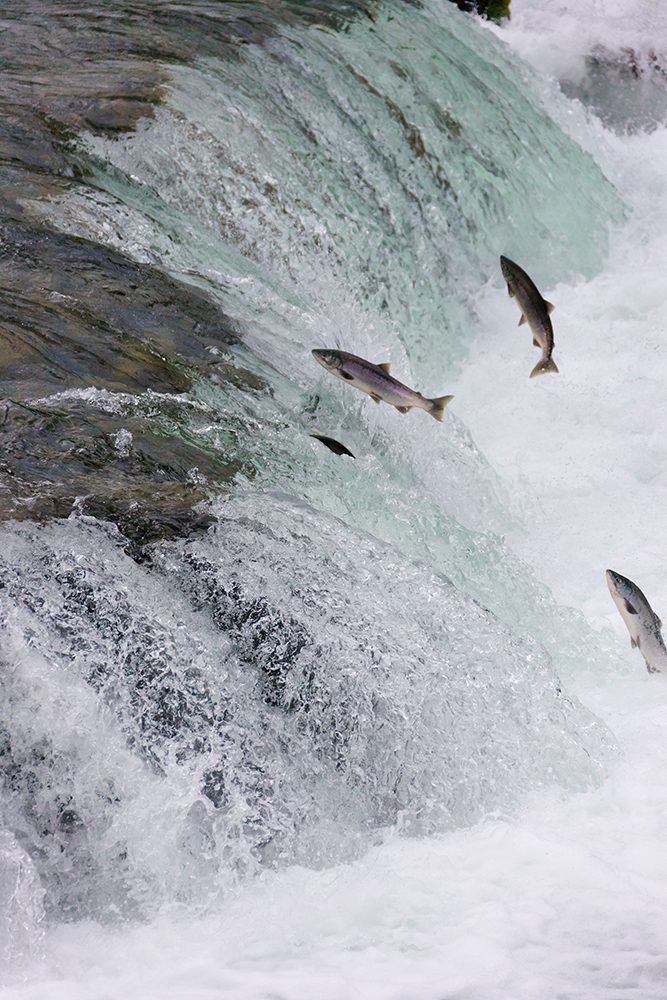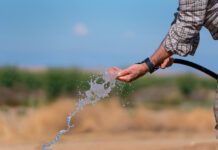Governor Gavin Newsom recently released his California Salmon Strategy for a Hotter, Drier Future. It is a 37-page roadmap designed to achieve the goal of restoring aquatic ecosystems in the age of climate change, as the introduction says.
It is important to recognize this comprehensive approach to restoring salmon populations is an official departure from previous efforts at the state and federal level to improve the survivability and reproduction of California’s salmon. It takes a half-dozen strategies and combines them into a plan that may turn the tide on salmon restoration.
Some of it sounds great and incorporates efforts that have proved successful such as food web projects in the Sacramento Valley that have succeeded in delivering fatter, healthier young salmon to the Sacramento River, increasing their chances of survival in the wild in order to return in a few years to spawn.
Other elements remain questionable, including vague references to flow requirements that could create significant hardships or increased costs on other water users, including farmers and urban families and businesses. Growers on the Scott and Shasta rivers in Northern California have faced significant hardships because state-mandated flow restrictions have significantly hindered their ability to divert irrigation water, even though fish populations appear to be very healthy.
The Governor’s plan includes six priorities:
- Remove barriers and modernize infrastructure
- Restore and expand habitat for salmon
- Protect water flows and water quality in key rivers at the right times to support salmon
- Modernize salmon hatcheries
- Transform technology and management systems for climate adaptability
- Strengthen partnerships
The common denominator in all this, of course, is water. Salmon need it and so do people, including growers, businesses and rural and urban communities. But salmon also need habitat like rivers with side channels where baby salmon migrating to the ocean can rest. And they need food to be able to grow and make it to the ocean. They need strength to survive and return in three years to spawn to start the cycle all over again.
But salmon have not been getting consistent habitat benefits, and the abundant food they need when you consider that flow-based regulations have dominated salmon recovery efforts since the salmon biological opinion was adopted in 2009.
Newson’s plan emphasizes willing buyer/willing seller transactions of water to improve stream flow. While mentioned in the document as “voluntary,” the water user community, including the State Water Contractors, federal water users and local water districts, remind us when they sign onto programs like this that their efforts are mandatory. Commitments for higher water flows and millions of dollars for restoration programs are there for the purpose of improving the success of California salmon in order to deliver better water supply reliability in the future.
In a recent LinkedIn post, State Water Contractors General Manager Jennifer Pierre demonstrated their commitment to work across the aisle with conservation groups to achieve a common goal.
“One of the most rewarding things I did during COVID isolation,” said Pierre, “was strike up a friendship with Rene Henery at Trout Unlimited. We discussed all of the ways we actually AGREE on solutions and kicked off what is now the ‘Reorienting to Recovery’ salmon collaborative…”
The collaborative includes the Delta Stewardship Council, The Bay Institute, Trout Unlimited, Metropolitan Water District of Southern California and others. Action 6.2 in the Governor’s salmon strategy specifically mentions “Reorienting to Recovery,” sending a clear message to state elected and appointed officials that cooperative efforts to solve problems are a much better path than a top-down regulatory approach of the past.
Newson’s plan is an effort to bring together different elements in the long effort to balance water supply reliability and protecting our natural environment. Most people will find something in it they like. They will also find things that raise questions and the level of caution in embracing it.
It is positive that the Governor’s approach openly seeks partnerships and voluntary commitments toward improving the ecosystem that supports salmon. And it is a stark difference from 25 years of failed attempts at helping salmon by simply releasing more and more water to the ocean through degraded channels and expecting better results.












